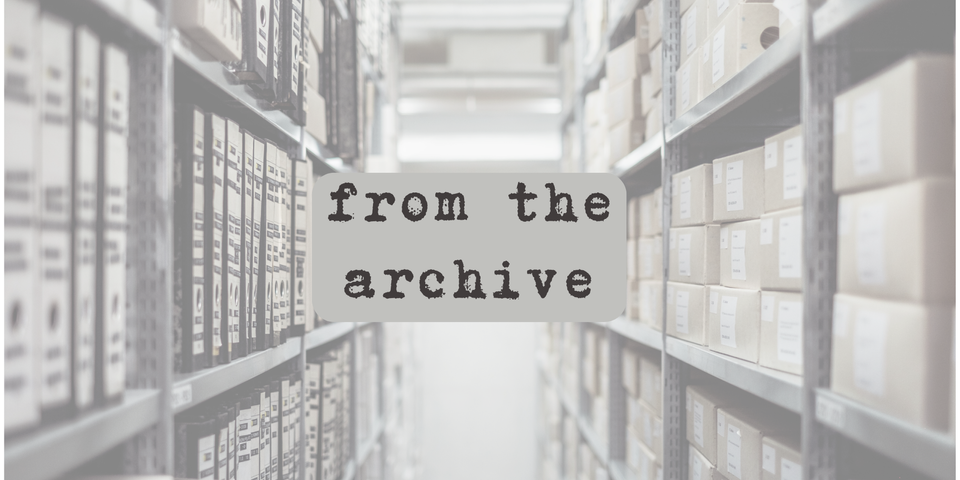The actual costs of the NDIS

First published November 7 2022
NDIS costs are in the news again, with the release of the latest Annual Financial Sustainability Report showing the same kind of wild assumptions that other AFSR reports have shown so far, and are repeatedly found not to be credible.
But those same media reports also don’t look any deeper at why costs are rising, what the money is being spent on and whether disabled people are actually getting more support.
I did a shout out on Twitter, and disabled people suggested enough topics for about twenty articles, so I’ll start with what NDIS funds are being spent on.
The basics
There are now 554,917 people getting NDIS supports and the most recent budget said that this will cost $35.7 billion next year. Some of this money goes to run the Agency, but the rest is spent on in the community. Over 270,000 people now have jobs due to the NDIS, one of the fastest growing areas of the economy. More family members are working, as are younger people with disability.
About 40% of people getting support are children with disability, and about half those getting support from the NDIS didn’t get any support before.
So what are the funds being spent on? I’ve had a muck around with the NDIA data spreadsheets, starting to work out what is being spent on what. I looked at the ACT and NSW to start with, and picked the largest groups of expenses, which account for up to 80% of the expenditure for everyone on the NDIS. Everything else, and I mean everything, is in the other 20-40%. Home modification, wheelchairs, everything else.
Other areas of government spending don’t provide these kinds of granular data and information about what is being spent. The data is available by age, state/territory, and for each specific line item, including for example, different payment rates for staffing at different times of the day. Defence reports on the costs of materials and hardware, but not staffing or the kind of detail that the NDIS publishes. Instead, external organisations do the work of looking in detail at the Defence budget, and asking questions about what is being funded.
So what is in the NDIS numbers? I used the average support line item spreadsheet, and put together categories such as all the different staffing costs for different times for the same support. I looked at two very different sized areas, ACT and NSW, and will do the other states and territories down the track.
Below are two tables showing the top areas of expenditure for each state/territory, the total cost and the percentage of the total spend for that state/territory.
ACT
NSW
As is well known, SIL, or group homes, account for a big chunk of the NDIS expenses, with the next two categories being about basic disability support. The fourth highest category though is assessments with 4-6% of the total budget being spent on these costs.
Both NSW and the ACT make significant contributions to their school systems (supporting kids with disability and school transport) and to residential aged care costs. Support coordination and plan management between them are at over 3%, just to help people using the NDIS, and pay invoices. Imagine what disability organisations could do with that! And the others are as listed.
Trust us
One issue that came up again and again when I asked disabled people what they were keen to hear more about was the ever increasing demands from the NDIS for endless reports.
A $4000 report for a $150 piece of equipment, $5000 worth of medical reports that say the same thing as they said last year that no one at the NDIS reads, or $3000 worth of reports for a review to get funding for the next year. Every dollar that is spent on these reports is a dollar that doesn’t go to provide support for disabled people.
As the above analysis shows, the percentage of the NDIS funds that are spent on assessments (reports) alone is really significant. It is more than capacity building for kids for example. How many of these reports are needed, and what does this say about how the NDIS views disabled people?
A submission to the current Joint Standing Committee [submission 7] on the NDIS from disability advocacy groups said that:
“A requirement for updated evidence from therapists is inconsistent, and unclear. Reports that are provided are subsequently stated to be insufficient, despite there being no information provided as to what information is actually required. Participants are left to guess how much of their funding they should be using to provide reports to the NDIA, and will often have to use funding from the next plan to prepare for internal review.”
Consistently, disabled people and their families report this over-use of reports to justify every single part of supports that are already approved in their plans. Even when disabled people get the reports, the Agency will refuse to approve the supports, or out-source that refusal to the increasing number of plan managers.
Microwave rule
The NDIS talks a lot about only funding what is ‘reasonable and necessary’. They’ve put together an entire website setting out the rules about what they will pay for and what is an ‘every day expense’.
Take food, for example. The NDIS talks about how they won’t fund food because that is an every day expense, nor any kind of food needs related to health, such as allergies or intolerances or illness. But they will fund a support worker to shop for food, prepare meals and to show a disabled person how to cook and prepare their food. This shows up in the costs tables above as ‘Assistance with self-care’, the second highest expense in the NDIS.
But what if the disabled person doesn’t have enough money for food? Or the equipment to cook that food, such as a microwave? The NDIS is clear that they won’t fund either of these things, because they are ‘every day expenses.’ Half of disabled people live in poverty, and may live in places without decent cooking facilities. What if a microwave would make eating more accessible? What if a microwave would mean access to cheaper freezer meals, without the need for a support worker? Bad luck, the NDIS won’t fund a microwave, even when this might be a much less expensive option than having a support work come and cook a meal, and might be what the disabled person actually wants.
This is where the rigidity of the NDIS’ approach to funding supports shows up. Charlie Park on Twitter described this well saying that the NDIS “often funds a more expensive option (e.g. 1:1 training with a PT, hydro with a physio, an electric recliner chair) over a cheaper option that meets the person's needs (e.g. an exercise class, a swimming pass, a manual recliner chair) because it appears more disability-y.” The NDIS guidelines constantly reiterate that they won’t pay for ‘mainstream services’ or an ‘everyday expense’ even when that is a cheaper option than a ‘disability service’.
TangentWoman said something similar, with their suggested support model rejected because it wasn’t individual, when their household of disabled people wanted to share supports around food, such as a collective meal plan and shopping. Instead, the NDIS funded individual support workers, a much more expensive option.
The NDIA’s own research shows that self-directed funding, where disabled people have control over how they spend their own supports, costs less than, or no more than agency managed funds. Disabled people know what they need, and need to be trusted more to use their funding to solve some of their support problems. We are innovative because we live in a world designed to exclude us.
And the data bears this out. There is an enormous amount of money for ‘assistance with self-care’, which is for support workers, the second highest amount spent in the NDIS. Is this the best use of money, both in the short and longer term? Is the NDIS being flexible and innovative enough to trust disabled people and families to spend their packages well?
Bigger disability world
Group supports, that are mostly for people with an intellectual disability, are a really significant part of the costs - housing (SIL), activities in groups and employment in ADEs, or sheltered workshops, are all big components of NDIS spending. This older model of disability support that particularly applies to people with an intellectual disability, hasn’t changed with the introduction of individual plan, and in fact, is growing. There’s little choice or control in this model and change is urgently needed.
Back before the NDIS, a now mostly forgotten group called In Control lobbied hard to change the disability support system for people with an intellectual disability. They argued that self-directed support and individual plans were essential to realising the rights of people with an intellectual disability, who often will use disability support for their entire lives and had experienced the worst of institutions.
InControl’s submission to the Productivity Commission inquiry talks about having “a shared interest in the rights of people living with disability or other types of vulnerability, and the importance of such people being at the centre of the decision-making about their lives, and the importance of supporting people into valued roles as citizens within communities that value diversity.”
The peak organisation of people with intellectual disability and their families, what was then known as the National Council on Intellectual Disability (now Inclusion Australia) was part of In Control, with their state and territory members hosting forums and discussions about self-directed funding with people with intellectual disability.
In her book, Dr Georgia Van Toorn traces some of the key drivers of the push for individualised funding in Australia, and notes that In Control Australia was influential because it was ‘one of the few organisations at the time with practical expertise stemming from previous involvement in IF (individualised funding) initiatives, both in Australia and overseas.’
They firmly positioned individualised funding for disability support as an expression of self-determination for disabled people, particularly people with intellectual disability, as the funding moves from the service provider to the individual.
The reason I am talking about this is that for people with an intellectual disability, most of these dreams and hopes about a new funding model haven’t been realised. They still live in group homes, go to group activities at a centre, and are mostly shut out from employment, despite all the billions of dollars spent on the NDIS.
The rigidity of how the NDIS allows funding to be spent, and the huge power imbalance between disabled people and the market, mean innovation, and our bloody rights, are right at the bottom of priority lists and any discussion of costs instead of at the top where they belong.
